Understanding Spinal Injuries from Auto Accidents
Spinal injuries from car accidents are serious and potentially life-altering. Prompt recognition, immediate response, thorough medical evaluation, and ongoing care are critical to improving outcomes and preventing further damage. This article outlines key actions to take after a suspected spinal injury in a car accident, symptoms to recognize, treatment options, recovery strategies, legal considerations, and prevention of further harm.
Recognizing Symptoms and Signs of Spinal Injuries After a Car Accident
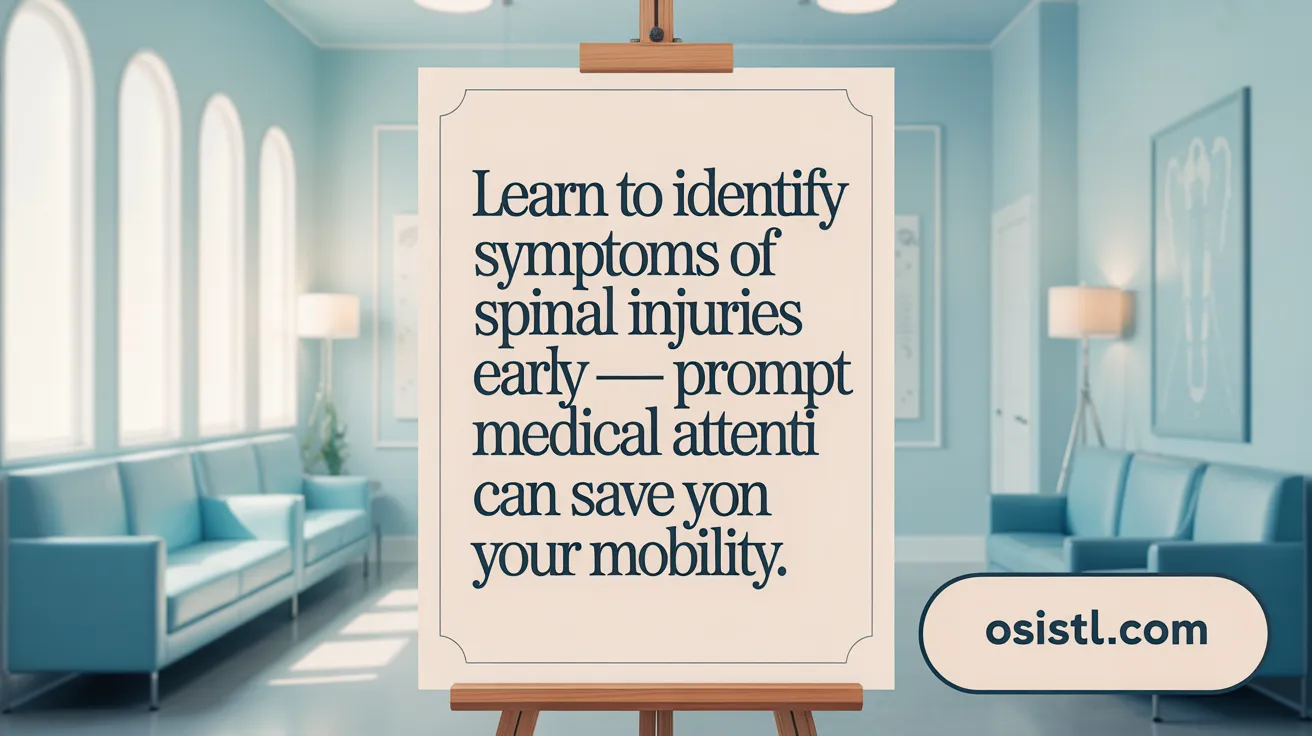 After a car accident, it is critical to recognize the potential signs of spinal injuries to seek immediate medical attention. Common symptoms include severe pain in the neck or back, which may be accompanied by numbness or tingling sensations in the limbs. Weakness or a sudden loss of movement can also indicate serious damage to the spinal cord or nerves.
After a car accident, it is critical to recognize the potential signs of spinal injuries to seek immediate medical attention. Common symptoms include severe pain in the neck or back, which may be accompanied by numbness or tingling sensations in the limbs. Weakness or a sudden loss of movement can also indicate serious damage to the spinal cord or nerves.
In emergency situations, signs that suggest a more severe injury are particularly important. These include extreme pain or pressure in the neck or back, difficulty breathing, and loss of bladder or bowel control. Visual signs such as a twisted or immobilized neck or back—often observed in the injured person—are warning indicators of serious injury.
Spinal injuries can cause various other symptoms like muscle spasms, a burning sensation, stiffness, or problems with coordination and balance. Sometimes, symptoms are not immediately apparent because adrenaline and shock can mask pain. This delayed symptom onset means that even if discomfort seems minor initially, medical evaluation should not be delayed. Learn more about delayed back pain symptoms.
In cases of spinal cord injury, individuals may experience paralysis—either paraplegia, affecting the lower body, or quadriplegia, affecting both the arms and legs. Additional autonomic issues may include blood pressure instability and difficulties with bladder or bowel control. For comprehensive details on spinal cord injury symptoms and autonomic dysfunction.
Because quick action is essential to prevent long-term damage, anyone involved in a car accident exhibiting these signs should undergo prompt diagnosis and treatment by healthcare professionals. Early care and appropriate interventions can significantly improve recovery outcomes and reduce the risk of permanent disabilities. For first aid guidelines and emergency care, see spinal injury first aid.
Immediate Emergency Response for Suspected Spinal Injuries
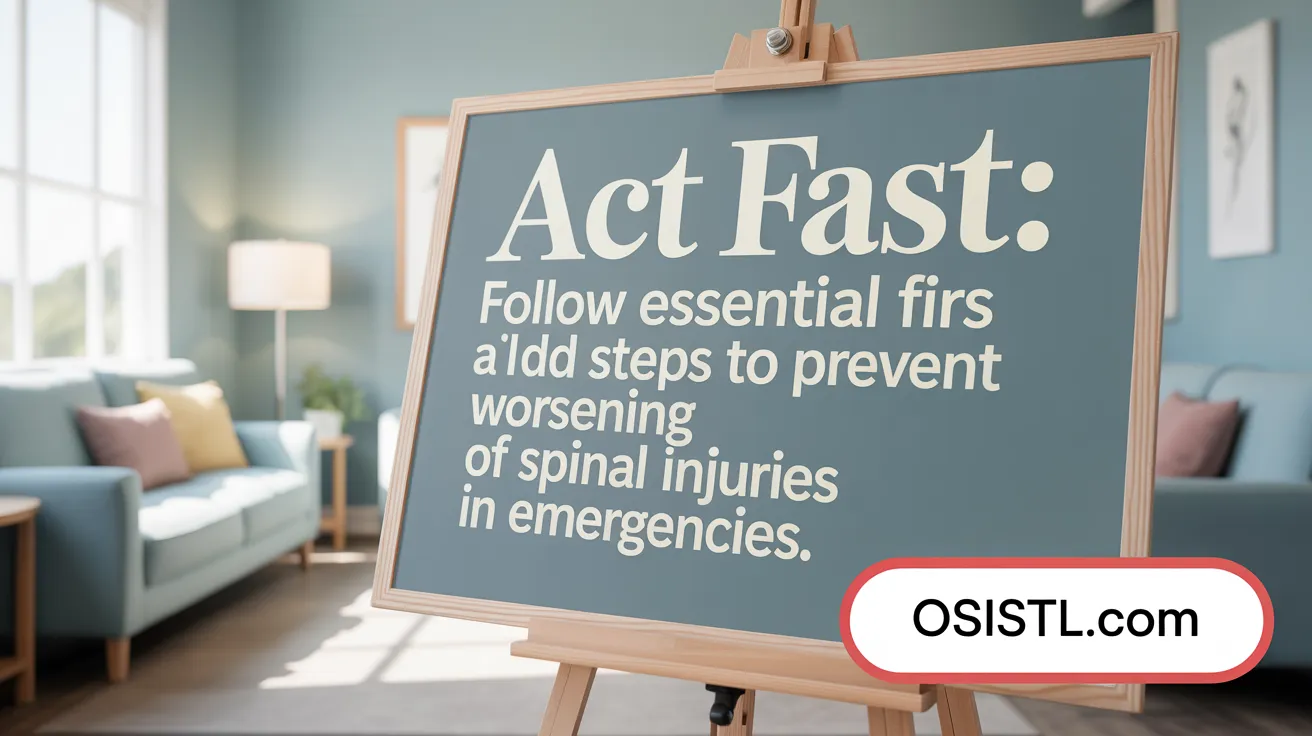
What immediate medical and emergency response steps should be taken if a spinal injury is suspected after a car accident?
If you suspect someone has sustained a spinal injury following a car crash, the most crucial step is to keep the person as still as possible to prevent worsening the damage. Movement of the head, neck, or spine should be avoided unless there is an immediate threat to life, such as severe bleeding or airway obstruction.
Call emergency services immediately by dialing 911. Clearly describe the injury and symptoms to ensure rapid dispatch of medical assistance. When emergency responders arrive, they will typically immobilize the person's head and neck using heavy towels, rolled sheets, or specialized cervical collars. They may also use a spine board or backstretcher to stabilize the spine during transport.
If the individual is wearing a helmet, especially in cases involving motor vehicle or bike accidents, do not remove it unless it interferes with airway access or respiration. Removing a helmet can risk additional injury, so leave it in place unless emergency personnel advise otherwise.
While waiting for help, monitor the person’s vital signs. Check for signs of breathing, responsiveness, and consciousness. Be alert to symptoms such as intense pain, numbness or weakness in limbs, loss of bladder or bowel control, or abnormal head or body positioning.
Provide reassurance and avoid any unnecessary movement. Maintaining a calm environment and supporting the head and neck can help prevent further injury until professional help arrives.
For detailed guidance on immediate steps and best practices, see First aid for spinal injury and Handling suspected spinal injury.
The Importance of Professional Medical Assessment and Diagnosis
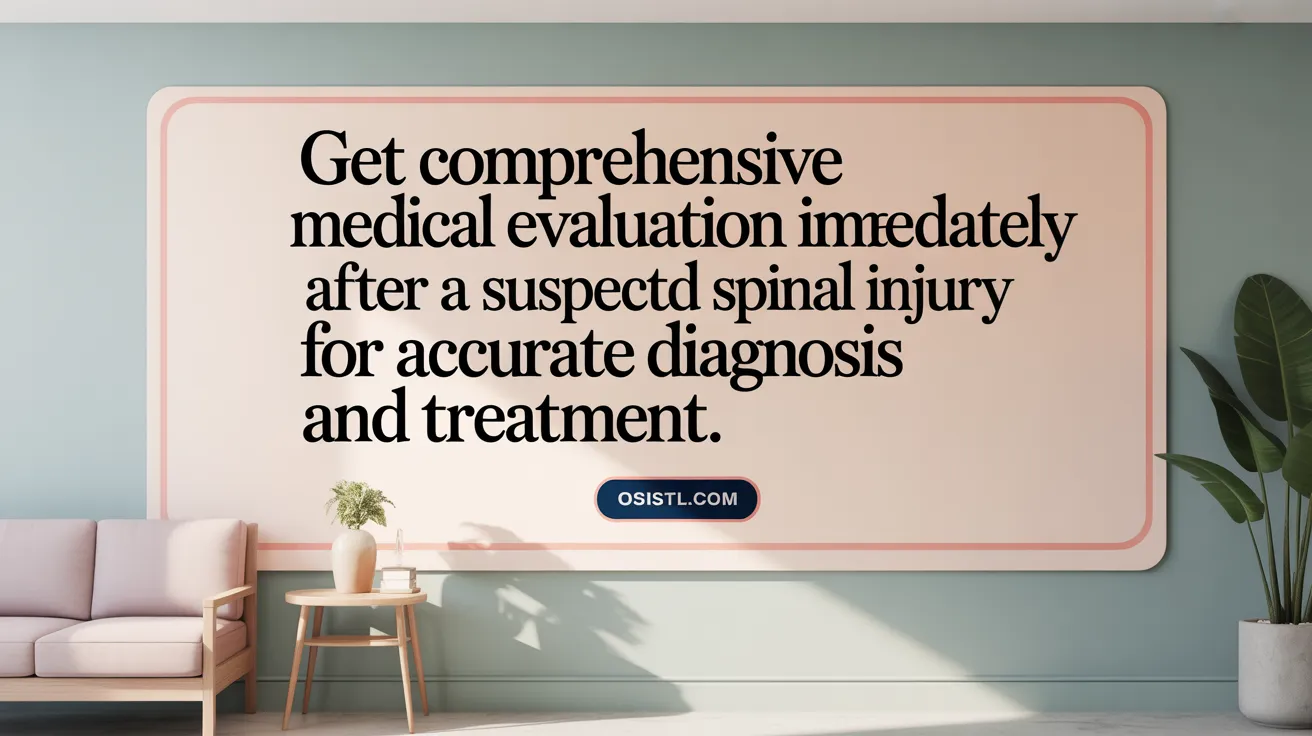
Why is it important to seek professional medical assessment and diagnosis after a spinal injury from a car accident?
Spinal injuries are intricate and vary greatly in severity and type. Sometimes, symptoms might be subtle or delayed due to shock or adrenaline, making it difficult for even the injured person to recognize the seriousness of their condition.
Getting a comprehensive medical evaluation ensures that healthcare providers can identify the full extent of the injury. Diagnostic imaging tools such as X-rays, CT scans, and MRIs are vital in visualizing fractures, dislocations, herniated discs, or spinal cord damage that might not be immediately apparent.
Neurological examinations performed by specialists assess motor and sensory functions, helping determine if nerve pathways are affected. These assessments are essential to prevent further neurological deterioration.
Specialized doctors like orthopedic spine surgeons, neurosurgeons, and physiatrists play a crucial role in interpreting diagnostic results and establishing an effective treatment plan. Early and accurate diagnosis guides interventions that can prevent permanent paralysis, nerve damage, and other complications.
Timely medical assessment forms the critical basis for effective treatment, whether it involves immobilization, surgery, or rehabilitation, significantly influencing recovery outcomes and quality of life for the patient. For more detailed information on spinal cord injury diagnosis and treatment and the importance of medical attention after spinal injury, patients should seek professional guidance promptly.
Treatment Options and Approaches for Spinal Injuries
What treatment options are available for spinal injuries sustained in car accidents?
The management of spinal injuries resulting from car accidents varies significantly based on the severity and specific characteristics of the injury. Initially, immobilization techniques are essential to prevent further damage. Devices such as neck collars, head immobilizers, and backboards are commonly used at the scene of the accident and upon hospital admission to keep the spine in a neutral position.
Once stabilized, surgical interventions may be necessary, especially if there are fractures, dislocations, or compression of the spinal cord. Procedures like decompression, spinal fusion, or the placement of rods and screws help provide stability and decompress neural elements (Surgical intervention for spine stabilization).
Medications play a vital role in the initial phase, including pain relievers, anti-inflammatory drugs, and spasticity management to minimize nerve irritation and control symptoms. Although corticosteroids like methylprednisolone were once routine, recent guidelines suggest a more cautious and case-dependent approach due to potential side effects (Medications in spinal cord injury).
Rehabilitation is a cornerstone of long-term recovery. Physical and occupational therapies are tailored to maintain and improve muscle strength, mobility, and daily functioning. These therapies focus on preventing secondary complications, such as pressure ulcers, blood clots, and muscle contractures (Rehabilitation experts for spinal injury).
Emerging therapies and technologies are also gaining attention. These include electrically stimulated systems, neuroregenerative treatments, and experimental approaches like stem cell therapy aimed at repairing nerve pathways. Advances in assistive devices, such as modern wheelchairs and computer adaptations, support independence and enhance quality of life (Electrical stimulation devices).
In summary, treating spinal injuries from car accidents involves a multidisciplinary approach. From immediate stabilization using immobilization devices to complex surgical procedures and innovative therapies, the goal is to prevent further injury, reduce symptoms, and maximize recovery potential (Spinal Cord Injury Treatment Options).
Handling Specific Spinal Injuries: Whiplash, Fractures, and Cord Damage
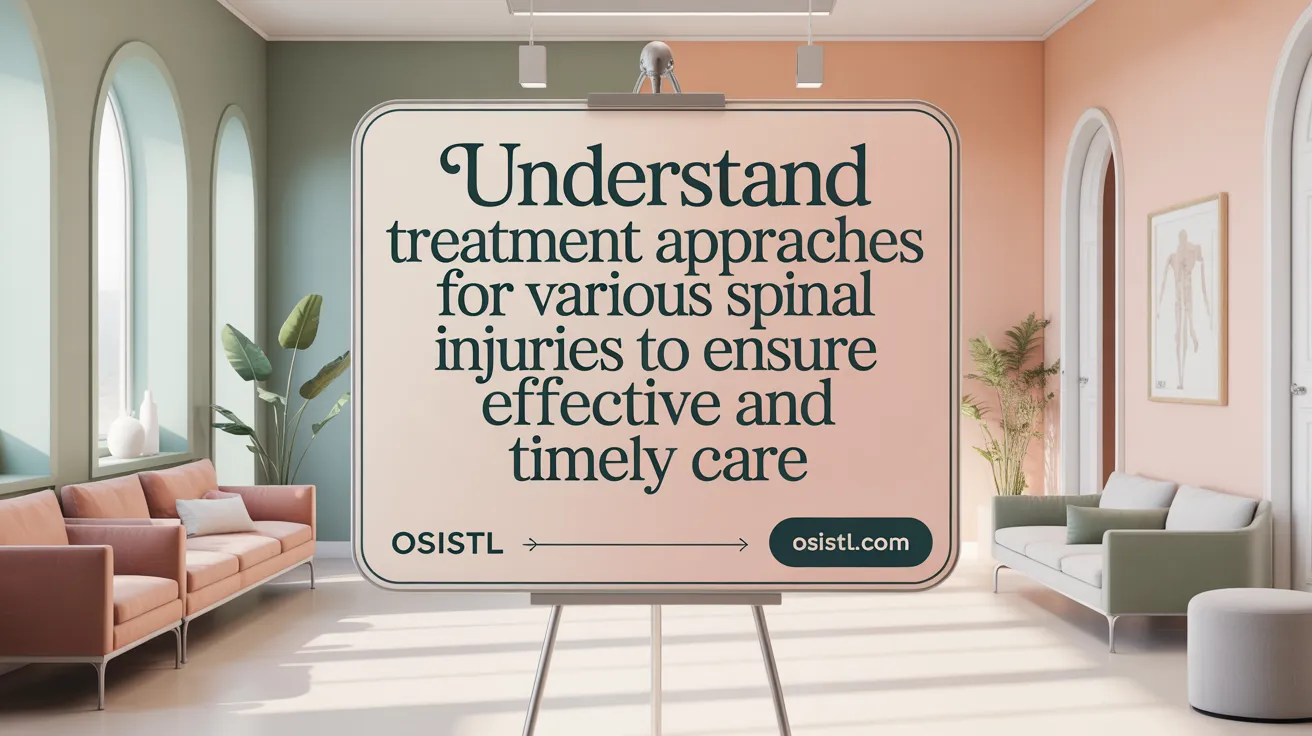
How should specific injuries such as whiplash injury in car crashes, spinal fractures, and spinal cord injuries be handled following a car accident?
Each spinal injury demands a specific approach to treatment and management. Whiplash, which involves stretching of tendons, ligaments, and muscles in the neck, generally benefits from rest, ice therapy initially, and gradually progressing to physical therapy to restore mobility. This injury often resolves within days or weeks with proper care.
Spinal fractures, depending on their severity, might require immobilization using braces or traction. In cases where the fracture causes instability or compression of the spinal cord, surgical intervention such as spinal fusion or decompression may be necessary to realign the vertebrae and prevent further damage. For more details on treatments, see treatment options for spinal injuries.
Spinal cord injuries are considered medical emergencies, needing immediate care to prevent permanent paralysis. Emergency treatments focus on stabilizing the spine with collars or spine boards, preventing secondary injuries through surgical procedures to decompress or stabilize the spine, and managing complications like breathing difficulties or blood clots.
Rehabilitation programs are crucial for recovery, involving tailored physical and occupational therapy aimed at maximizing function and independence. Prompt, specialized treatment is vital in all cases to improve outcomes and reduce long-term disability. For comprehensive rehabilitation approaches, see rehabilitation after spinal injury.
Recovery and Management Tips for Back and Neck Injuries
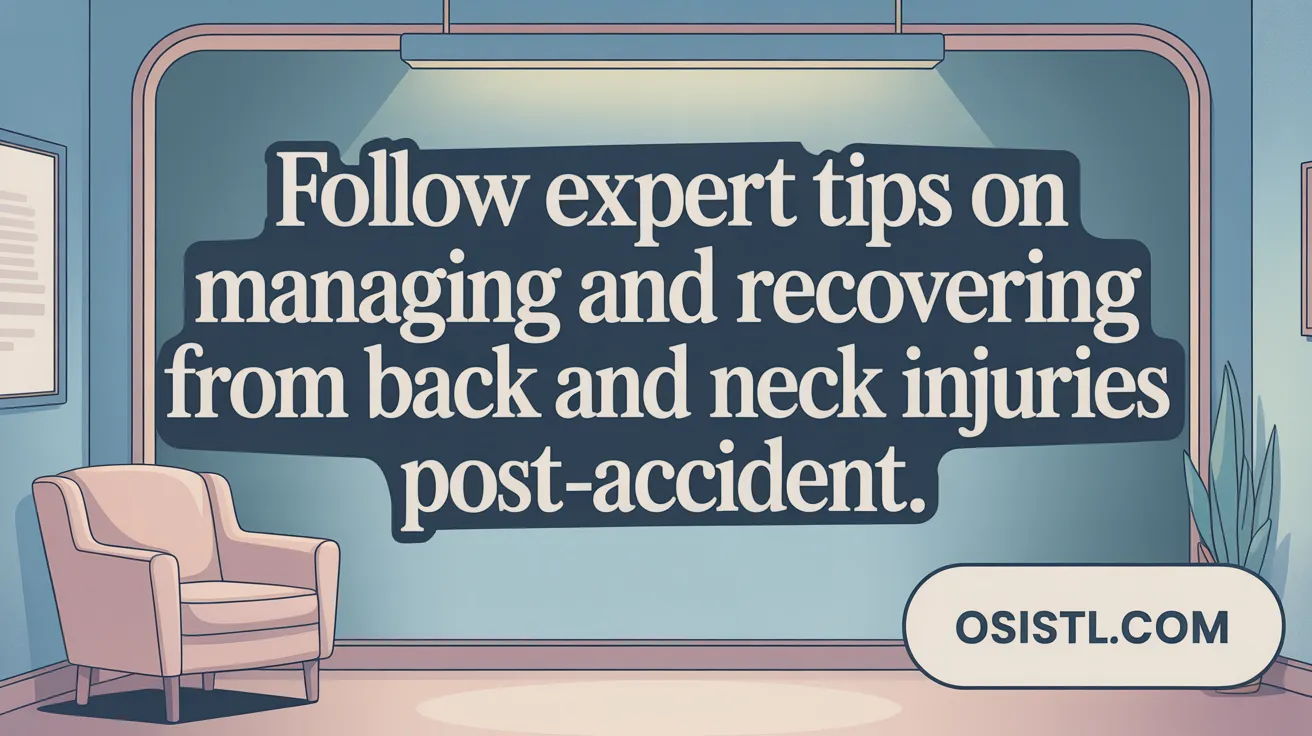
What are effective management and recovery tips for back and neck injuries caused by car accidents?
Managing back and neck injuries resulting from car accidents requires careful attention and timely intervention. The first step is prompt medical evaluation, even if symptoms are not immediately obvious. Advanced diagnostic tests like X-rays, MRIs, or CT scans help identify hidden injuries such as fractures, herniated discs, or spinal misalignments.
Once diagnosed, adhering to medical advice is critical. Treatment may include rest, but it should be balanced with gentle movement and physical therapy exercises designed to restore strength, flexibility, and mobility. Avoiding strenuous activities during initial recovery reduces the risk of worsening the injury. Consulting a physiotherapist and engaging in rehabilitation exercises are recommended.
Therapies like ice and heat play a vital role. Applying ice packs for 15-minute intervals can decrease swelling and numb pain in the early phase, while heat therapy later on can soothe tight muscles and improve blood flow. These methods are part of initial treatment strategies for managing back pain after accidents (Ice therapy for back pain, Heat therapy benefits).
Supportive devices such as neck braces, ergonomic supports, or specially designed pillows can help maintain proper spinal alignment and reduce stress on injured tissues. Proper posture during daily activities and ergonomically designed workspaces support healing (Ergonomic support for back injury, neck braces).
Psychological support also contributes to recovery. Managing stress, practicing relaxation techniques, and gradually reintroducing activities restore confidence and emotional well-being, which are essential for holistic healing. Emotional support during recovery is emphasized for overall well-being (Emotional support during recovery).
Finally, consistency in monitoring symptoms and regular medical follow-ups facilitate early adjustments to treatment plans, ensuring a safe and thorough recovery process. This comprehensive approach minimizes the risk of long-term complications and promotes full healing (Medical attention after spinal injury, Importance of medical evaluation post-accident).
Legal Rights and How to Protect Yourself After a Spinal Injury
When dealing with a spinal injury resulting from a car crash, understanding your legal rights is crucial for ensuring appropriate compensation and protection of your interests. For more information on spinal cord injury symptoms and the importance of immediate medical attention, refer to spinal cord injury symptoms and causes.
Pursuing compensation for medical expenses and losses
Victims of spinal injuries have the right to seek financial recovery for various damages. This includes covering medical bills, hospitalization, surgeries, ongoing therapy, medication costs, lost wages, and compensation for pain and suffering. The goal is to make sure that all current and future expenses necessary for recovery and quality of life are addressed. Learn about legal compensation for spinal injuries and South Carolina fault rules and legal options for spinal injury victims.
Collecting and preserving evidence
Building a strong legal case begins with gathering essential evidence. Immediate steps include obtaining police reports, photographs of the accident scene, vehicle damage, and injuries, as well as collecting witness statements. Medical records documenting the injury, diagnostic tests, and treatment plans are vital for establishing the severity and impact of the injury. Preserving these records early ensures that crucial evidence is available when pursuing your claim. For guidance on evidence collection and medical documentation, see what to do after suffering a spinal injury in an accident.
Consulting spinal injury attorneys
Working with legal professionals specializing in personal injury and spinal injuries can significantly increase the chances of fair compensation. An experienced attorney can evaluate your case, explain your rights, handle negotiations with insurance companies, and represent you in court if necessary. Their expertise is invaluable in navigating the complex legal landscape, especially when insurance disputes or liability issues arise. Explore more about legal rights and options for spinal injury victims in Delaware and spinal cord injury legal process.
Statutes of limitations and timely claims
Legal actions for personal injuries are subject to statutes of limitations, which are deadlines for filing claims. In Minnesota, for example, the typical time frame is two years from the date of the accident. Failing to file within this time can bar your claim, so prompt action is essential. Initiating legal proceedings early helps preserve evidence, secure testimonies, and strengthen your case. For specific advice regarding statutes of limitations and filing timelines, see what to do after a spinal fracture car accident.
Working with insurance companies and litigation options
Insurance claims often play a significant role in recovery. Victims should report the injury promptly and provide comprehensive documentation. Insurance adjusters may attempt to settle quickly for lesser amounts; having an attorney can prevent settlement offers that undervalue your injuries.
If negotiations fail to result in a fair settlement, litigation may be necessary. Pursuing a personal injury lawsuit allows for full compensation, including damages for pain, suffering, and future medical needs. An attorney can guide you through this process, ensuring your rights are protected. More details on insurance claims and litigation are available at spinal injury legal claims and insurance tips and legal options after spine injury in Michigan.
| Aspect | Important Points | Additional Details |
|---|---|---|
| Evidence Collection | Police reports, photos, witness statements, medical records | Critical for establishing liability and injury severity |
| Legal Consultation | Personalized legal advice and case evaluation | Ensures proper handling of complex legal procedures |
| Timing | File claims within statute limitations (generally two years) | Delay may result in the loss of legal rights |
| Insurance Claims | Prompt reporting, documentation, and negotiation | Protects from undervaluation or bad faith denial |
| Litigation | Filing lawsuits if negotiations fail | Pursues full compensation for long-term damages |
Being knowledgeable about your legal rights and working with experienced attorneys can make a substantial difference in the outcome of your case after a spinal injury. For additional resources on spinal injury diagnosis, treatment, and recovery, see Mayo Clinic's spinal cord injury diagnosis and treatment and acute spinal cord injury overview.
Key Takeaways and Moving Forward After a Spinal Injury
Recognizing and responding properly to a spinal injury sustained in a car accident can profoundly influence recovery outcomes. Immediate immobilization and emergency care minimize risk of further harm, while professional medical diagnosis guides targeted treatment plans. Rehabilitation, supportive therapies, and adherence to medical and legal guidance support long-term recovery and protect your rights. Understanding your symptoms, seeking timely help, and engaging legal support if needed are crucial steps to navigating this challenging journey. Prevention and cautious post-accident care can reduce additional injury risks, providing a foundation for healing and adapting to life after spinal trauma.
